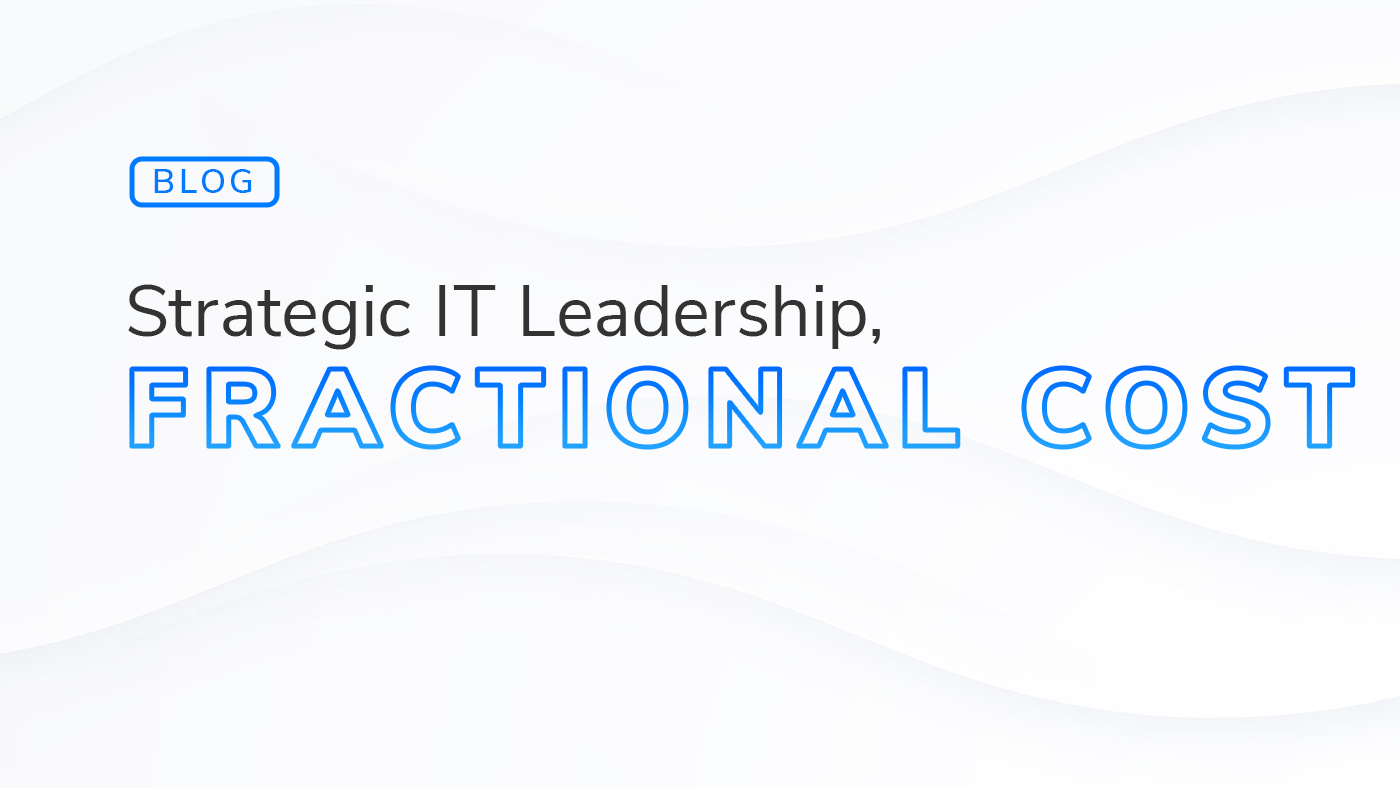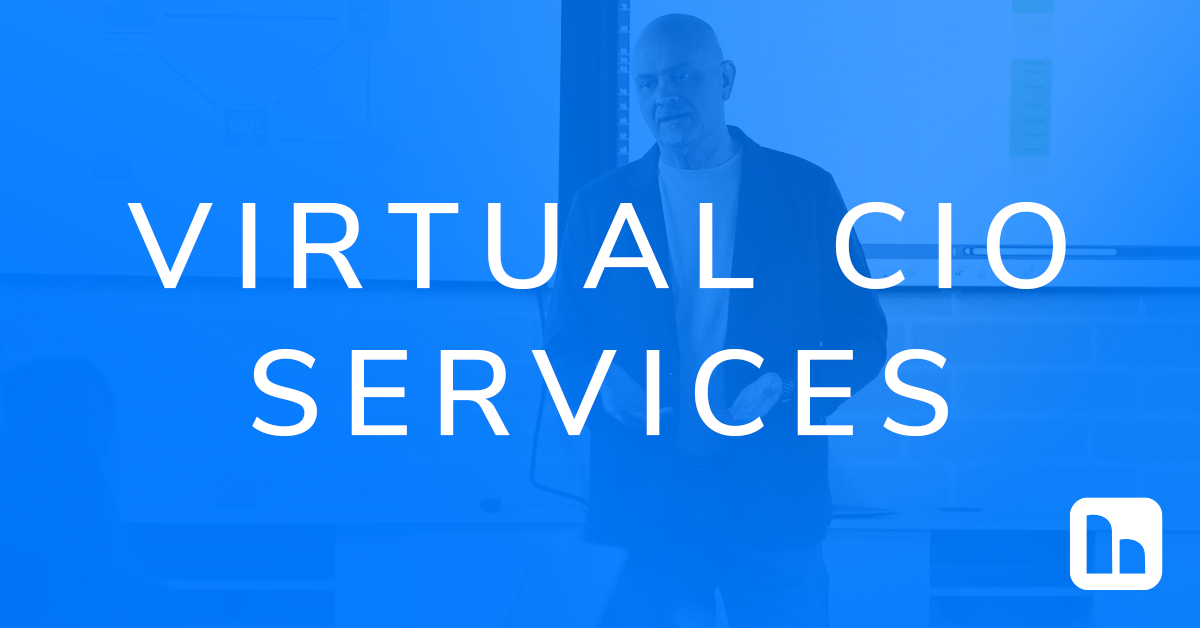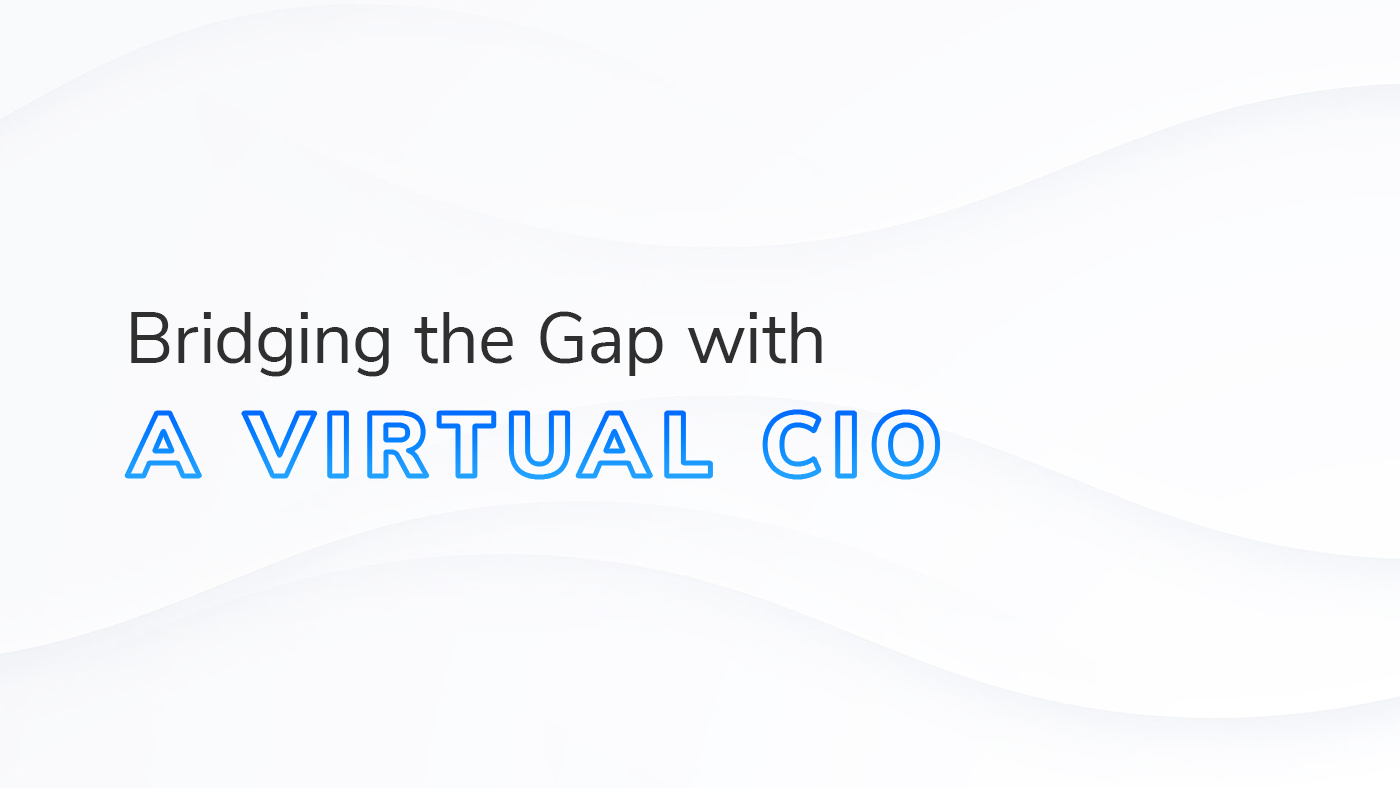What is a vCIO?
- Written by: Ryan Mosher

Organizational leaders constantly seek solutions to streamline operations and enhance their technological edge. You don’t have a choice—adapt or get left behind.
But … there are some significant hurdles for leaders to overcome as they try and align business goals and technology. Only 54% of business and technology leaders believe that their business and IT share an understanding of corporate strategy. And when only 16% of these same leaders give their IT department an “excellent” rating for its ability to manage business, that leads to stagnation and stats like 72% of organizations failing to out-innovate their competitors.
All of the above reasons and more show why you need a CIO to bridge the gap between IT and organizational goals—but bringing in a CIO isn’t always feasible for every organization.
Enter the Virtual Chief Information Officer (vCIO). But what exactly is a vCIO, and why should your organization consider using one? We’ll get into the world of vCIOs, outlining their role, advantages, and how they differ from traditional CIOs.
Incorporating a vCIO into your business model is a strategic move that unlocks affordable expertise, injects innovative viewpoints, and offers the adaptability and scalability crucial for tailoring and aligning your IT approaches to your ultimate organizational objectives.
What is a Virtual CIO?
A vCIO is a third-party contractor that steps into the shoes of a conventional Chief Information Officer. They juggle the same responsibilities: Setting IT goals, managing IT budgets, and ensuring your technology strategy aligns seamlessly with your business objectives.
vCIOs provide extensive expertise and flexibility—they can be whatever you need them to be, and they can do that without the full-time C-suite price tag. VCIOs can advise, develop strategy, embed themselves into your business on an interim basis during a vacancy, provide assessments, evaluate IT purchases, and much more.

Why Use a vCIO?
Leveraging the expertise of a vCIO can offer a multitude of benefits. Here’s why many organizations are turning to vCIOs today:
- Cost-Effective Expertise: A full-time CIO can be a significant financial burden—the average yearly salary for an in-house CIO is $228,000. A vCIO offers expert services at a fraction of the cost.
- Fresh Perspectives: Being external, vCIOs bring unbiased, innovative ideas to the table, impartial to internal politics.
- Scalability and Flexibility: vCIOs offer a comprehensive and flexible solution for organizations—adapting quickly to changing business needs, ensuring organizations can efficiently scale and modify their IT strategies.
- The resources of a dedicated technology partner: vCIOs have the means, connections, and technical expertise to prepare for and solve IT problems—not only as they arise but, often, avoiding them altogether.
Opting for a vCIO allows organizations to access cost-effective expertise, gain fresh perspectives, and enjoy scalability and flexibility in managing their IT strategies.
Virtual vs. Traditional: The CIO Face-Off
While a vCIO and an in-house CIO share similar roles, their operational models differ. A vCIO, not being a full-time employee, can serve multiple clients, offering a broader range of experience and insights. Having a trusted advisor with experience across numerous industry verticals, differently sized companies, and various organizational structures is an invaluable asset. It gives them, and by extension, their clients, a unique understanding of the technology landscape.
Additionally, a vCIO has scalability on their side. vCIOs can scale their involvement in your organization up or down, adapting to your company’s specific business goals, projects, and budgets.
While exploring different vCIO services, here are some things to keep in mind:
A great vCIO should…
- Understand your corporate strategy and the operational needs of your business.
- Provide technology leadership and strategic planning.
- Align hardware, software, people, and finances toward a preferred state for technology investments.

vCIO Services: A Strategic Asset
Your vCIO should focus on aligning technology with your business’s vision. They tackle common IT challenges, such as resource constraints and strategic tech investments, turning them into opportunities for growth and efficiency.
With a vCIO managing technology strategies and projects, businesses can focus on their core operations without worrying about the technology complexities that crop up. This leads to improved efficiency and productivity and, ultimately, faster achievement of organizational goals.
One of the most prominent mistakes organizations make is focusing on just their present technology needs, and they fail to consider their future needs. vCIOs are experts in future-proofing organizations’ technology requirements.

Conclusion
A vCIO allows you to align IT with your business strategy—propelling your organization to greater success and innovation. Virtual CIOs can be an indispensable asset in the modern business toolkit by offering expertise, flexibility, a fresh perspective, and significant cost savings.
At HBS, our vCIO practice offers the guidance, expertise and innovation that organizations need to thrive. We’ve seen the difference it can make when IT leadership is aligned with corporate strategy and helping the organization drive toward its strategic objectives with intention and a clear technology vision.
We’d love to help you determine how a vCIO might benefit your organization. To learn more, get in touch with the HBS team today.
Related Content

Fractional IT Leadership: Smart, Strategic, and Scalable
Get top-tier IT leadership without the full-time cost. Fractional IT leaders provide strategic planning, security oversight, and digital transformation expertise—on your terms.

Virtual CIO
Enhance your IT-business alignment with the vCIO Services of HBS, offering strategic roadmaps, environment-wide assessments, and tailored strategies.

IT Leadership Redefined: How a vCIO Can Bridge the Gap and Drive Your Business Forward
Discover how a Virtual Chief Information Officer (vCIO) can bridge the gap between business strategies and IT infrastructure, driving your business forward.






